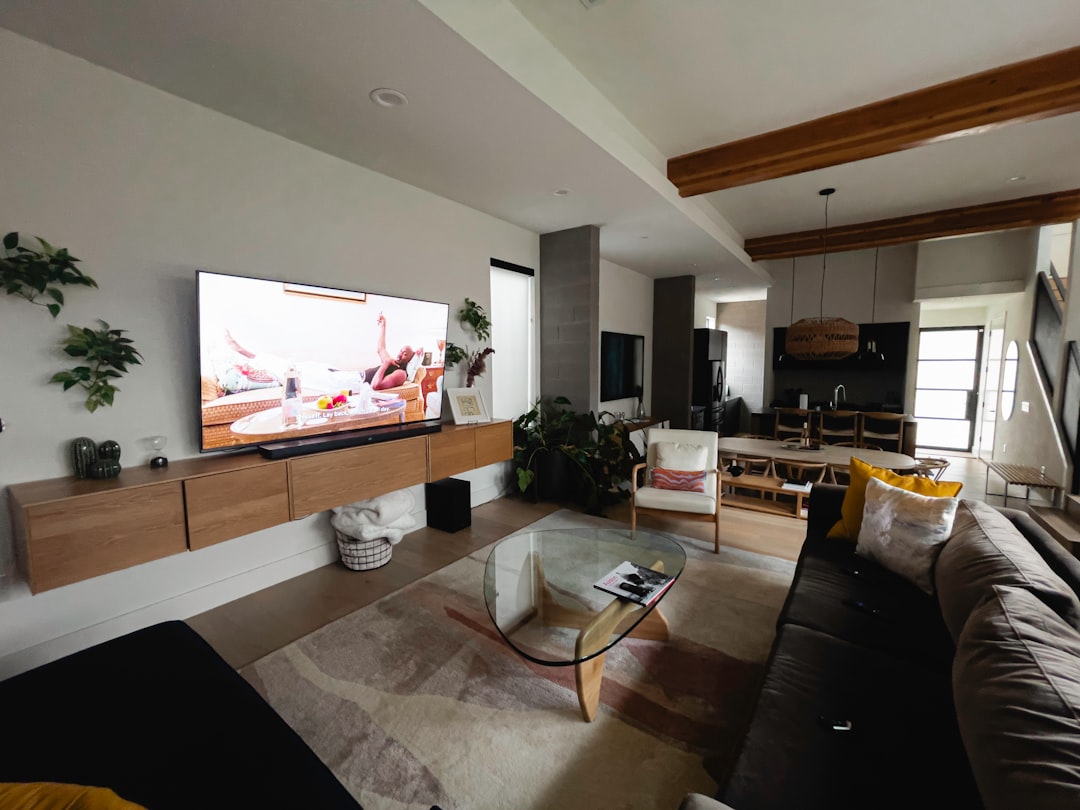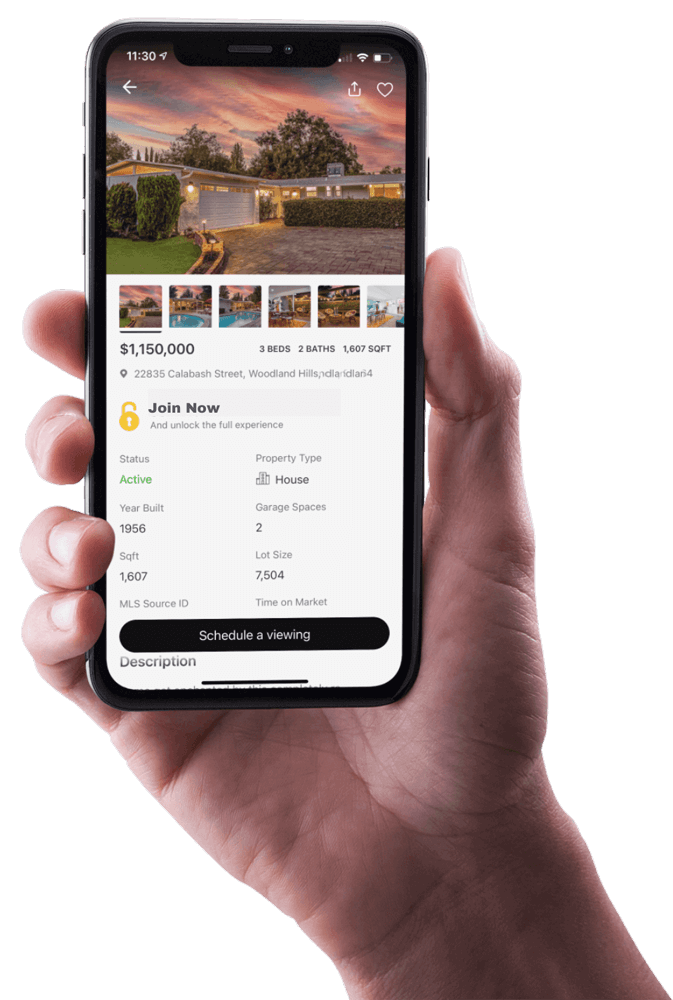Permanent Outdoor Lights Compared: GOVEE vs. LUMARY vs. EUFY
Permanent outdoor LED puck lights are transforming how homeowners approach seasonal lighting, architectural accenting, and year-round curb appeal.

Photo by Allen Boguslavsky on Unsplash
Three flagship OLEDs dominate the premium TV landscape in 2025: Samsung’s S95F (QD OLED with a matte coating and One Connect box), LG’s G5 (new RGB tandem OLED, Gallery-style), and Sony’s BRAVIA 8 II (QD OLED driven by a high-end cognitive processor). Each set targets slightly different needs—brightness and anti-glare performance, all‑round versatility and Dolby Vision support, or reference-level processing for purists. This comparison breaks down design, brightness, reflections, color, processing, gaming, and buying guidance so readers can pick the OLED that best matches their room, usage, and budget.
All three models adopt a premium, thin OLED profile, but they differ in mounting, inputs, and included hardware. The Samsung S95F is the thinnest and relocates all ports into a separate One Connect box, which simplifies cable routing and helps when space behind the console is tight. The LG G5 is designed to sit almost flush when wall-mounted, emphasizing the Gallery look; in some regions small sizes are offered with a stand, but many customers will wall mount. The Sony BRAVIA 8 II is the thickest of the trio and ships with two feet instead of a central pedestal stand.
Connectivity favors LG and Samsung: both provide four HDMI 2.1 ports capable of 4K at 165 Hz, which is a boon for high-frame-rate PC gaming and future consoles. Sony provides two HDMI 2.1 ports capped at 4K/120 Hz, and one doubles as an eARC port—adequate for many users but limiting for those who need multiple high-bandwidth inputs simultaneously. Regarding HDR and audio formats, LG and Sony support Dolby Vision while Samsung sticks with HDR10+; Sony remains the only one passing DTS lossless formats.
For bragging rights, HDR peak brightness is critical—especially as OLEDs increasingly push higher luminance while preserving black levels. LG’s G5 delivers the highest measured HDR brightness on test patterns and in real-world scenes, consistently hitting very high luminance outside of full‑screen white scenes. The Samsung S95F follows closely and, in many real-content scenarios, is nearly indistinguishable from the LG.
Sony’s BRAVIA 8 II trails the other two on peak luminance and becomes noticeably dimmer in game mode. While the Sony’s HDR performance remains excellent for many viewing conditions, users expecting the absolute brightest highlights will prefer LG or Samsung.
SDR performance has historically been a weak point for OLED, but 2025 models largely narrow the gap. The LG G5 stands out by producing very strong SDR peaks—measured peaks in common test windows exceed many past OLEDs and make it an excellent choice for bright rooms without direct glare. Samsung performs well in SDR, though generally one step behind the G5. Sony is serviceable in SDR but notably dimmer than its competitors, sometimes dropping to much lower peaks in large bright windows.
Anti-reflection performance can determine how usable a TV is in rooms with lots of windows or strong lights. Samsung’s S95F features an evolved matte coating designed to aggressively reduce reflections; it effectively “swallows” glare so bright highlights and window reflections largely disappear. This coating is a decisive advantage for viewers with direct light sources opposite the screen.
However, the matte coating comes with trade-offs. In rooms with bright ambient light (but not direct reflections), Samsung’s black levels can rise noticeably, producing a faint gray-pink tint across the image. LG’s G5 maintains near pitch-black blacks in such ambient conditions, preserving perceived contrast. Sony behaves similarly to Samsung in this area, with raised black levels in ambient light making it the least favorable option for very bright rooms where black level fidelity matters.
Color capability remains a strong suit for QD OLEDs, but the gap has tightened as LG improves its panel tech. Samsung and Sony still deliver slightly brighter, punchier HDR colors, with Samsung particularly impressive for vivid highlights. LG’s G5, however, is not far behind and achieves the brightest whites among the three.
For SDR content, Sony covers more of the wide BT.2020 space and all of DCI-P3, which makes it attractive to users who intentionally push SDR into wider color spaces. That said, Sony’s out-of-the-box white balance trends toward cool (too much blue in gray shades), which can make the image appear colder than competitors despite strong gamut coverage. LG and Samsung achieve very accurate color performance out of the box, often obviating the need for professional calibration for most buyers.
Image processing is where the Sony BRAVIA 8 II shines for those who prioritize low-resolution upscaling and artifact reduction. The cognitive XR-driven engine removes macroblocking and compressive artifacts with impressive clarity while minimizing banding in gradients. This makes low-bitrate cable feeds and older content look cleaner and more film-like.
LG’s G5 is nearly as capable and, in some situations, removes even more macroblocking while retaining detail. The G5’s smoothing can outperform Sony in specific low-quality sources, making it a compelling choice for viewers who frequently watch heavily compressed streams. Samsung’s S95F is competent at upscaling and is the best of the three at minimizing banding, but it lags behind in smoothing macroblocking and low-bitrate noise—an important consideration if most viewing material comes from low-res sources.
OLED panels remain excellent for gaming thanks to near-instant pixel response. The gaming decision for many will come down to latency, refresh-rate capabilities, and HDR format support. LG and Samsung take the lead for gamers by offering four HDMI 2.1 ports (4K/165 Hz), enabling multiple high-bandwidth devices without swapping cables. Sony’s two HDMI 2.1 ports are limited to 4K/120 Hz and may force gamers with multiple consoles or a PC and console to use an HDMI switch.
Sony is the weakest gaming pick: it shows higher input lag (especially outside game mode) and is capped at 120 Hz on its HDMI inputs. The BRAVIA 8 II’s input lag outside of game mode can feel sluggish for interactive apps and menus. Between LG and Samsung, both are excellent for gaming; distinctions come down to feature preferences. Xbox players who expect Dolby Vision for gaming will favor LG, while those who prioritize aggressive anti-glare performance and the One Connect box might prefer Samsung—though Samsung lacks Dolby Vision.
LG’s G5 had an HDR10 banding issue in game optimizer mode initially; firmware updates fixed the issue in Filmmaker mode. A practical workaround for gamers is to enable Auto Low Latency Mode (ALLM) on consoles while using Filmmaker mode to achieve low lag with better gradient handling—although ideally game optimizer mode would be banding-free.
All three are positioned as premium flagships and command high prices. Sony’s BRAVIA 8 II typically carries the highest MSRP, which makes it a tougher value proposition unless the buyer specifically prioritizes Sony’s processing, Dolby Vision fidelity, or DTS support. Samsung and LG generally offer better value for broader use-cases: Samsung for bright-room glare control and cable management, and LG for the most balanced feature set including Dolby Vision and versatile processing.
Recommended when windows or lights sit directly opposite the TV and reflections are a constant problem. The matte coating significantly reduces visible glare and keeps content legible even under strong direct light. The One Connect box is also a practical advantage for tight media consoles and cleaner cable management. Buyers who can live without Dolby Vision or DTS support and who prioritize vivid color and anti-glare performance will find the S95F compelling.
Suited for users seeking a balanced flagship with Dolby Vision and excellent SDR/HDR brightness. The G5 is ideal for wall-mounted gallery setups and for those who want accurate colors, top-tier upscaling, and very good gaming performance once the Filmmaker mode + ALLM workaround is employed. In rooms with bright ambient lighting (but not direct reflections), the G5 preserves black levels exceptionally well.
Best for dedicated home theater environments where reference processing and fidelity are top priorities. Sony’s cognitive XR processing produces superb upscaling and compression artifact reduction, making older or highly compressed content look better. This model suits collectors of high-quality 4K media who accept a smaller flagship size, limited HDMI bandwidth for multi-console setups, and a higher price for Sony’s processing pedigree.
Each flagship OLED offers distinct strengths: Samsung’s S95F excels at anti-glare performance and cable management with its One Connect architecture; LG’s G5 is the most balanced option with higher SDR/HDR peaks, Dolby Vision, and strong processing; Sony’s BRAVIA 8 II appeals to purists who prioritize the best image processing and fidelity despite higher cost and gaming limitations. The best pick depends on room lighting, content habits, gaming needs, and budget. Choosing the model whose strengths align with those priorities yields one of the top OLED experiences available in 2025.
Which TV is brightest overall for HDR highlights?
The LG G5 delivers the highest measured HDR brightness in most test patterns and real content windows, followed closely by the Samsung S95F. Sony's BRAVIA 8 II is dimmer in comparison, especially in game mode.
Is Samsung’s matte coating worth it?
Yes, when reflections are directly in front of the screen. The S95F's matte coating dramatically reduces visible glare. However, in rooms with diffuse bright ambient light (not direct reflections), the coating's trade-off--slightly raised black levels--can make LG a better choice for contrast retention.
Which TV is best for gaming with multiple consoles?
LG and Samsung are preferable due to four HDMI 2.1 ports. LG has Dolby Vision support (important for Xbox gamers who want Dolby Vision HDR), while Samsung offers a strong gaming feature set but lacks Dolby Vision. Sony's limited HDMI bandwidth and higher input lag make it the least practical for multi-console gaming setups without an HDMI switch.
Are colors accurate out of the box?
LG and Samsung are very accurate out of the box and are often good enough for enthusiasts without professional calibration. Sony covers a wider gamut but targets a cooler white point by default, which can make the image appear bluer unless adjusted or interpreted as intentional by the viewer.
Which TV offers the best value?
Samsung S95F and LG G5 generally provide better value for most buyers. Sony tends to be pricier and is best justified by buyers who specifically want its processing or audio format support.
Access all your saved properties, searches, notes and more.
Access all your saved properties, searches, notes and more.
Enter your email address and we will send you a link to change your password.


Your trusted MLS search companion